Contents
- I. Introduction to Cassette Toilet
- II. Understanding the Mechanism of a Cassette Toilet
- III. Components of a Cassette Toilet System
- IV. Benefits of Using a Cassette Toilet
- V. Proper Maintenance and Cleaning of a Cassette Toilet
- VI. Frequently Asked Questions about Cassette Toilets
- 1. How does a cassette toilet work?
- 2. Are cassette toilets easy to install and use?
- 3. How often do I need to empty the cassette?
- 4. Can I use regular toilet paper with a cassette toilet?
- 5. How do I clean and maintain a cassette toilet?
- 6. Can I use a cassette toilet in cold weather?
- 7. Are cassette toilets odorless?
- 8. Can I use a cassette toilet in my RV or boat?
- 9. Are cassette toilets environmentally friendly?
- 10. Can I use chemicals in my cassette toilet?
I. Introduction to Cassette Toilet
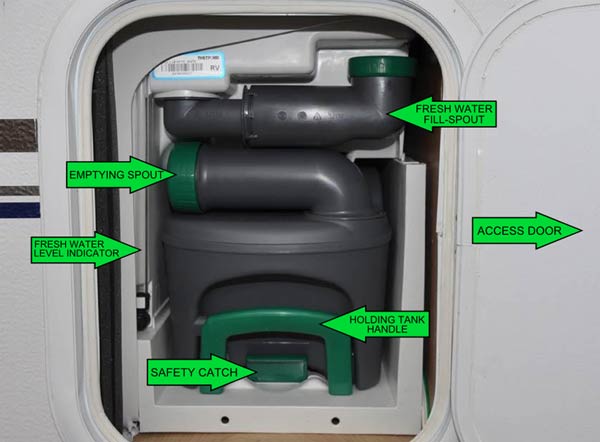
A cassette toilet is a portable sanitation system commonly used in recreational vehicles (RVs), campervans, and boats. It consists of two main components: a toilet bowl and a removable waste tank, also known as a cassette. The cassette is located below the toilet bowl and can be easily accessed for waste disposal.
One of the key advantages of a cassette toilet is its convenience. Unlike traditional flush toilets that require a connection to a sewage system, cassette toilets are self-contained and do not rely on external plumbing. This makes them ideal for use in remote areas or when camping off-grid.
Using a cassette toilet is simple and user-friendly. When nature calls, you can sit on the toilet bowl just like you would with a regular toilet. After use, you can flush the waste down into the cassette by pressing a lever or using an electric pump, depending on the model.
The waste is stored in the cassette, which is equipped with a sealed valve to prevent odors from escaping. Most cassettes have a capacity of around 10 to 20 liters, allowing for several days of use before needing to be emptied.
When it’s time to empty the cassette, you can easily remove it from the toilet and take it to a designated waste disposal point. Some cassettes even have wheels and handles for easier transportation. Once emptied, the cassette can be reattached to the toilet, ready for the next use.
Cassette toilets are designed to be hygienic and odor-free. Many models come with features such as built-in ventilation systems and chemical additives that help break down waste and control odors. Regular cleaning and maintenance are essential to ensure the longevity and optimal performance of the cassette toilet.
II. Understanding the Mechanism of a Cassette Toilet
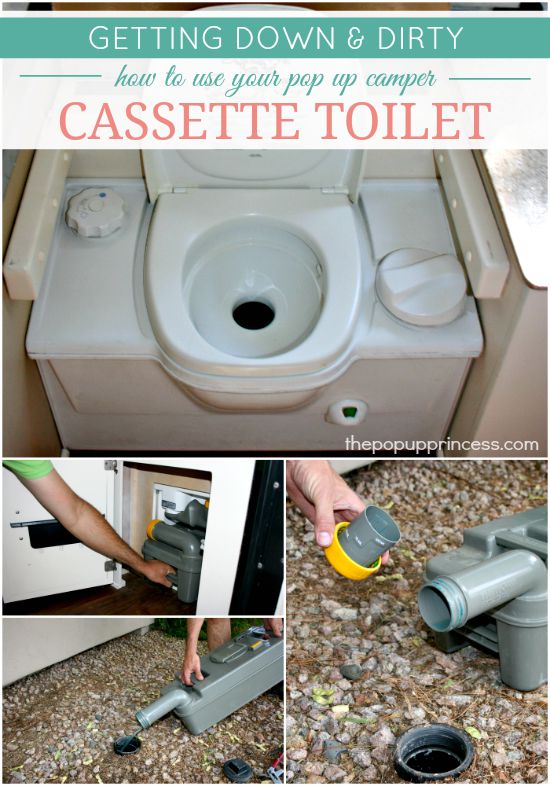
As an experienced camper and outdoor enthusiast, I have come across various types of toilets, but one that stands out for its convenience and functionality is the cassette toilet. In this section, I will delve into the inner workings of a cassette toilet, explaining how it functions and why it is a popular choice among campers and RV owners.
The Basics of a Cassette Toilet
A cassette toilet is a portable toilet system commonly found in recreational vehicles (RVs) and campervans. It consists of two main components: the toilet bowl and the waste cassette. The toilet bowl resembles a traditional flush toilet, complete with a seat and a water tank. The waste cassette, on the other hand, is a detachable container that holds the waste until it can be properly disposed of.
One of the key advantages of a cassette toilet is its self-contained nature. Unlike traditional toilets that require a connection to a sewage system, a cassette toilet is completely independent. This makes it ideal for camping trips and off-grid adventures where access to plumbing may be limited or nonexistent.
Flushing Mechanism
A cassette toilet utilizes a simple yet effective flushing mechanism. When you press the flush button or lever, a small amount of water is released from the water tank into the toilet bowl. This water creates a swirling motion, effectively rinsing away the waste and keeping the bowl clean and odor-free.
Some cassette toilets also feature a water-saving option, allowing users to control the amount of water used per flush. This is particularly useful in situations where water supply is limited, such as during extended camping trips.
Waste Management
Now let’s talk about the most critical aspect of a cassette toilet: waste management. The waste cassette, located beneath the toilet bowl, is designed to collect and store the waste until it can be emptied. It is equipped with a sealed lid to prevent any leakage or odors from escaping.
When the waste cassette is full or needs to be emptied, it can be easily detached from the toilet unit. Most cassette toilets have a convenient handle or carrying handle, making it hassle-free to transport the cassette to a designated waste disposal area.
Once at the disposal area, the waste cassette can be opened, and the contents can be emptied into a proper waste receptacle or sewage system. It is essential to follow local regulations and guidelines for waste disposal to ensure proper sanitation and environmental protection.
Maintenance and Cleaning
Proper maintenance and cleaning are crucial for the longevity and optimal performance of a cassette toilet. Regularly emptying and cleaning the waste cassette is a fundamental part of this process.
In addition to emptying the waste cassette, it is recommended to clean the toilet bowl and other surfaces with a mild, non-abrasive cleaner. This helps to remove any residue and maintain a hygienic environment.
Furthermore, it is essential to regularly check and maintain the seals and valves of the cassette toilet. These components ensure a tight seal and prevent any leakage or unpleasant odors.
Advantages of a Cassette Toilet
There are several advantages to using a cassette toilet, which explain its popularity among campers and RV owners:
- Portability: The compact and lightweight design of a cassette toilet makes it easy to transport and install in various settings.
- Independence: With a cassette toilet, you are not reliant on external plumbing or sewage systems, allowing for greater flexibility in choosing camping locations.
- Convenience: The self-contained nature of a cassette toilet eliminates the need for frequent trips to public restrooms or communal facilities.
- Hygiene: The flushing mechanism and regular cleaning ensure a clean and odor-free toilet experience.
- Water Efficiency: Many cassette toilets offer water-saving options, reducing water consumption during each flush.
III. Components of a Cassette Toilet System
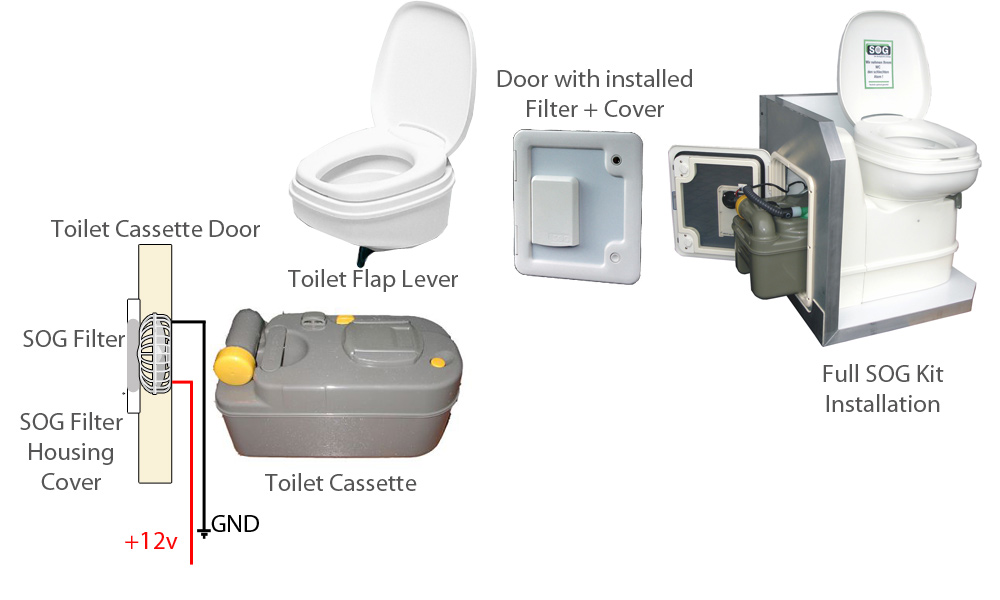
When it comes to understanding how a cassette toilet works, it’s essential to familiarize yourself with the various components that make up the system. A cassette toilet is a self-contained portable toilet that consists of several key parts, each serving a specific purpose. Let’s explore these components in detail:
1. Toilet Bowl
The toilet bowl is the main part of the cassette toilet system where users sit or squat to relieve themselves. It is designed to be comfortable and hygienic, providing a convenient and sanitary solution for personal needs. The bowl is typically made of durable plastic or ceramic material, ensuring easy cleaning and maintenance.
2. Flushing Mechanism
The flushing mechanism is responsible for rinsing the toilet bowl after each use. It ensures that waste is effectively flushed away, preventing odors and maintaining cleanliness. In most cassette toilets, the flushing mechanism is operated by a lever or button, which releases water from the onboard water tank to rinse the bowl.
3. Waste Holding Tank
The waste holding tank is a crucial component of the cassette toilet system. It is where all the waste, including urine and solid waste, is collected and stored. The tank is designed to be leak-proof and odor-resistant, ensuring that waste is contained safely and hygienically. Depending on the model, the waste holding tank may have a capacity of several gallons, allowing for multiple uses before needing to be emptied.
4. Cassette
The cassette is a removable container that houses the waste holding tank. It is designed to be easily detachable from the toilet unit, allowing for convenient transportation and disposal of waste. The cassette is equipped with a handle or carrying strap, making it easy to carry and empty at designated waste disposal facilities.
5. Ventilation System
To prevent unpleasant odors and promote airflow within the cassette toilet system, a ventilation system is incorporated. The ventilation system typically includes a vent pipe or fan that helps draw out odors from the waste holding tank, ensuring a more pleasant experience for users. Some cassette toilets may also have a carbon filter to further enhance odor control.
6. Water Supply
Most cassette toilets have an onboard water supply, which is used for flushing the toilet bowl and maintaining hygiene. The water supply is usually stored in a separate tank or reservoir, which can be refilled as needed. Some cassette toilets may also have a built-in water heater, allowing for warm water during flushing.
7. Control Panel
The control panel is the interface through which users can operate various functions of the cassette toilet system. It may include buttons or switches for flushing, water supply control, and other features specific to the model. The control panel is designed to be user-friendly and intuitive, allowing for easy operation even for first-time users.
8. Indicator Lights
To provide users with important information about the status of the cassette toilet system, indicator lights are often incorporated. These lights can indicate the level of waste in the holding tank, the status of the water supply, and other relevant information. Indicator lights help users monitor the system’s functionality and ensure timely maintenance and emptying.
Understanding the components of a cassette toilet system is essential for proper operation and maintenance. By familiarizing yourself with these parts, you can make the most of your cassette toilet and ensure a comfortable and hygienic experience, whether you’re camping, traveling, or in any situation where traditional plumbing is not available.
IV. Benefits of Using a Cassette Toilet
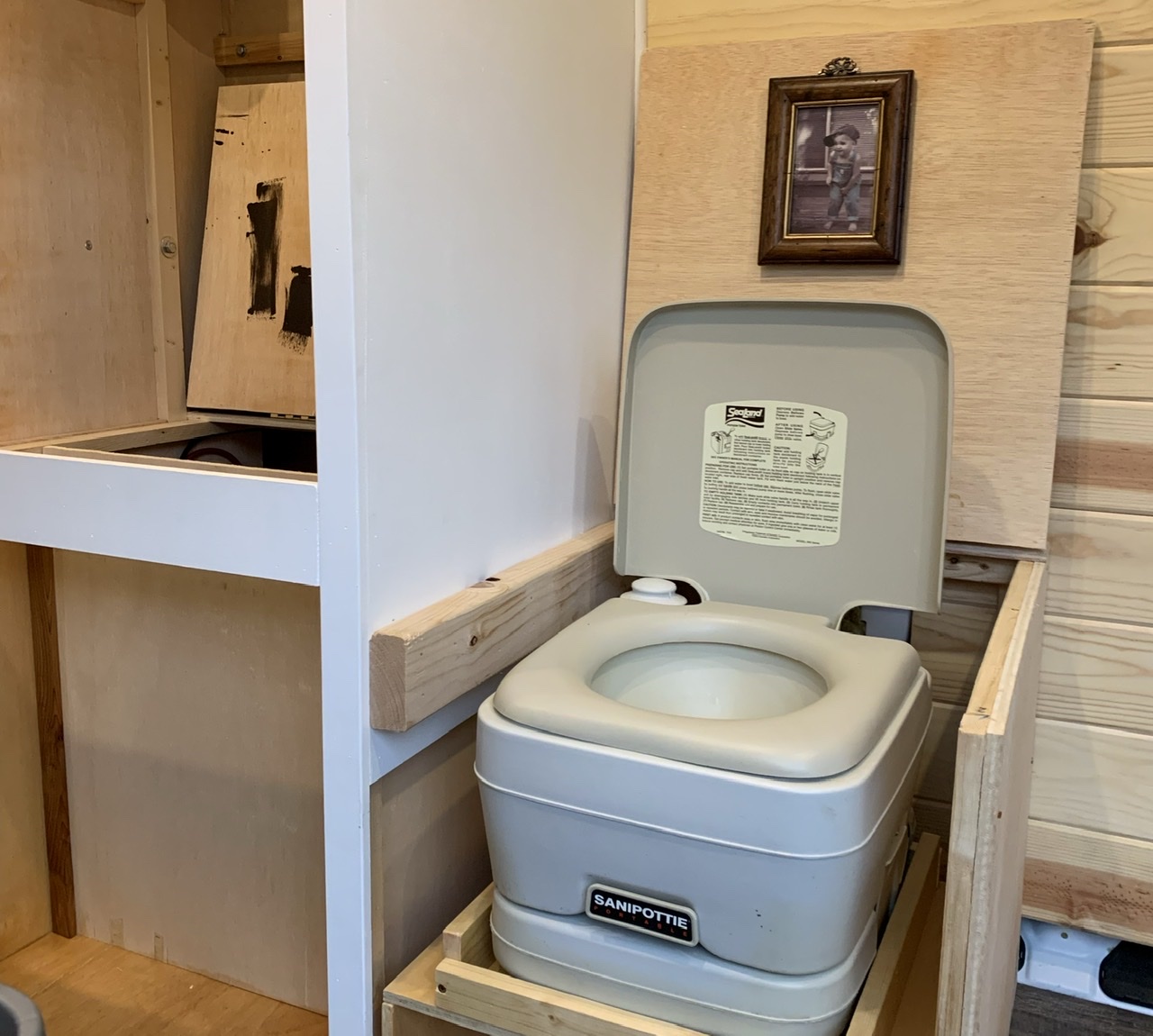
As an experienced camper and outdoor enthusiast, I have come to appreciate the many benefits of using a cassette toilet during my adventures. A cassette toilet is a portable and self-contained toilet system that offers convenience, hygiene, and environmental friendliness. In this section, I will delve into the various advantages of using a cassette toilet, based on my personal experiences and expertise.
1. Portability and Convenience
One of the key benefits of a cassette toilet is its portability. Unlike traditional toilets, which require a fixed plumbing system, a cassette toilet is designed to be easily transported and used in various locations. This makes it an ideal choice for camping trips, RVs, boats, and other outdoor activities.
With a cassette toilet, you can have the comfort and convenience of a toilet wherever you go. The compact design allows for easy installation and removal, and the waste can be easily disposed of at designated dumping stations. This eliminates the need to rely on public restrooms or dig holes in the ground, providing a more comfortable and hassle-free experience.
2. Hygiene and Cleanliness
Another significant advantage of using a cassette toilet is the enhanced hygiene and cleanliness it offers. The toilet system is equipped with a sealed waste tank, which prevents any odors or leakage. This ensures a clean and odor-free environment, even in confined spaces.
Additionally, cassette toilets are designed with user-friendly features that promote cleanliness. Many models come with built-in flushing mechanisms and water tanks, allowing users to flush away waste and maintain proper hygiene. Some models even include features such as antimicrobial surfaces and easy-to-clean materials, further enhancing the cleanliness of the toilet.
3. Environmental Friendliness
Using a cassette toilet can also contribute to environmental conservation. Traditional toilets rely on water for flushing, which can lead to excessive water consumption, especially in outdoor settings where water may be scarce. In contrast, cassette toilets use minimal amounts of water or even no water at all.
This water-saving feature not only helps to preserve natural resources but also reduces the impact on the environment. Additionally, many cassette toilets are designed to separate solid waste from liquid waste, allowing for more efficient waste management. The waste can be disposed of responsibly, either at designated dumping stations or through proper waste treatment facilities.
4. Cost Savings
Using a cassette toilet can also result in cost savings, especially for frequent campers or RV owners. By having a portable toilet system, you can avoid the expenses associated with using public restrooms or renting portable toilets.
Furthermore, cassette toilets require minimal maintenance and upkeep, which can save you money in the long run. With proper care and regular cleaning, a cassette toilet can provide years of reliable service without the need for costly repairs or replacements.
5. Privacy and Independence
Lastly, using a cassette toilet offers a sense of privacy and independence, particularly in remote or crowded locations. Having your own toilet system allows you to maintain your personal space and avoid the inconvenience of waiting in long lines or sharing facilities with others.
Whether you are camping in the wilderness or attending a crowded outdoor event, a cassette toilet provides a convenient and private solution for your sanitary needs. You can enjoy the freedom to use the toilet whenever you need to, without relying on external facilities.
V. Proper Maintenance and Cleaning of a Cassette Toilet
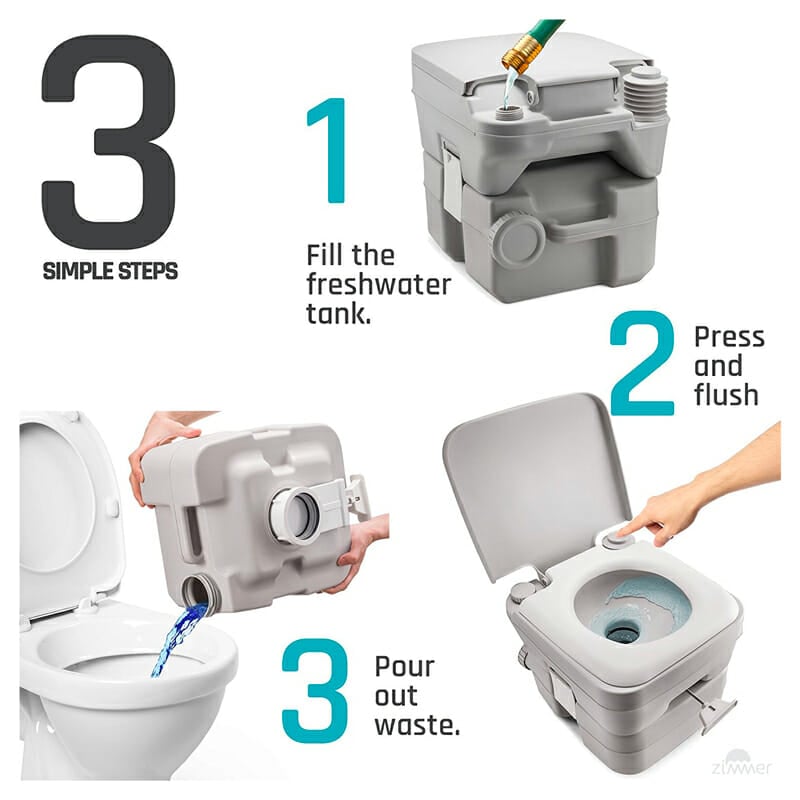
In this section, we will discuss the proper maintenance and cleaning techniques for a cassette toilet. As an experienced camper and outdoor enthusiast, I have learned the importance of keeping a cassette toilet clean and well-maintained to ensure its longevity and functionality. By following these tips and incorporating them into your camping routine, you can keep your cassette toilet in top condition and enjoy a hassle-free camping experience.
1. Regular Emptying and Cleaning
The first step in maintaining a cassette toilet is to regularly empty and clean the cassette tank. Depending on the frequency of use, this should be done every 2-3 days or when the tank is about 3/4 full. To empty the tank, locate the cassette compartment in your RV or portable toilet unit and remove the cassette by releasing the locking mechanism. Take the cassette to an appropriate disposal point or designated dump station and empty the contents into the appropriate waste receptacle.
Once the tank is empty, it’s time to clean it thoroughly. Start by rinsing the tank with clean water to remove any residual waste. Next, add a specialized cassette toilet cleaner or a mixture of water and mild detergent to the tank. Use a long-handled brush or a toilet brush specifically designed for cassette toilets to scrub the interior surfaces of the tank, including the bottom and the walls. Pay special attention to the corners and crevices where bacteria and odor-causing agents can accumulate.
After scrubbing, rinse the tank again with clean water to remove any cleaning solution residue. Finally, empty the tank once more and allow it to air dry before reassembling it into your cassette toilet unit.
2. Odor Control
One of the common concerns with cassette toilets is the potential for unpleasant odors. However, with proper maintenance and odor control techniques, you can keep your cassette toilet smelling fresh and clean. Here are a few tips:
- Use a specialized cassette toilet deodorizer or chemical additive designed to neutralize odors. These products are available in various forms, such as drop-in tablets, liquids, or sachets. Follow the manufacturer’s instructions for the correct dosage and frequency of use.
- Ensure proper ventilation in your RV or camping unit. Open windows or roof vents to allow fresh air to circulate and prevent odors from accumulating.
- Avoid using harsh chemicals or strong cleaning agents that can leave behind strong odors or damage the toilet components. Stick to mild detergents or specialized cassette toilet cleaners.
- Regularly clean the toilet seat and lid with a disinfectant wipe or spray to eliminate any bacteria or odor-causing agents.
3. Preventive Measures
Prevention is key when it comes to maintaining a cassette toilet. By implementing these preventive measures, you can minimize the risk of clogs, leaks, and other issues:
- Use RV or camping toilet paper that is specifically designed for cassette toilets. This type of toilet paper breaks down more easily and reduces the risk of clogs.
- Avoid flushing any foreign objects or non-biodegradable materials down the toilet. This includes wet wipes, feminine hygiene products, and paper towels.
- Regularly inspect the seals and gaskets of your cassette toilet for any signs of wear or damage. Replace them as necessary to prevent leaks.
- Consider using a biodegradable waste tank additive to promote the breakdown of waste and reduce the risk of clogs.
By following these maintenance and cleaning tips, you can ensure that your cassette toilet remains in optimal condition for years to come. Remember, a clean and well-maintained cassette toilet not only enhances your camping experience but also contributes to a more hygienic and comfortable environment. Happy camping!
VI. Frequently Asked Questions about Cassette Toilets
As an experienced camper and outdoor enthusiast, I often come across questions about cassette toilets. These portable toilets have become increasingly popular among campers, RV owners, and boaters due to their convenience and ease of use. In this section, I will answer some of the most frequently asked questions about cassette toilets to help you better understand their functionality and benefits.
1. How does a cassette toilet work?
A cassette toilet is a portable toilet system that consists of two main components: the toilet bowl and the waste-holding tank, also known as the cassette. The toilet bowl is similar to a regular flush toilet, with a seat, water flush, and a waste outlet. The waste is collected in the cassette, which can be easily removed and emptied at a designated waste disposal site.
2. Are cassette toilets easy to install and use?
Yes, cassette toilets are designed to be user-friendly and straightforward to install. Most models come with detailed instructions, and the installation process typically involves connecting the toilet bowl to the waste-holding tank and securing it in place. To use the cassette toilet, simply add water to the bowl, do your business, and flush. When the cassette is full, remove it and empty the waste into a proper disposal facility.
3. How often do I need to empty the cassette?
The frequency of emptying the cassette depends on several factors, such as the number of people using the toilet, the size of the cassette, and the duration of your trip. As a general guideline, it is recommended to empty the cassette when it is about three-quarters full to prevent any overflow. However, it is always a good idea to check the cassette’s level regularly and empty it as needed to maintain hygiene and prevent unpleasant odors.
4. Can I use regular toilet paper with a cassette toilet?
Yes, you can use regular toilet paper with a cassette toilet. However, it is essential to use biodegradable toilet paper to minimize environmental impact. Non-biodegradable toilet paper can clog the waste system and cause issues with emptying the cassette. Look for toilet paper specifically labeled as biodegradable or RV-safe to ensure compatibility with your cassette toilet.
5. How do I clean and maintain a cassette toilet?
Proper cleaning and maintenance are crucial for the longevity and efficient operation of a cassette toilet. After emptying the cassette, rinse it thoroughly with clean water to remove any residue. Use a mild cleaning solution or specialized toilet cleaner to clean the toilet bowl, seat, and other surfaces. Avoid using harsh chemicals or abrasive cleaners that can damage the toilet’s components. Regularly inspect the seals and gaskets for any signs of wear and replace them if necessary.
6. Can I use a cassette toilet in cold weather?
Yes, most cassette toilets are designed to be used in cold weather conditions. However, it is important to take certain precautions to prevent freezing and ensure proper functionality. Insulate the cassette with a thermal cover or wrap it in a blanket to retain heat. Use antifreeze additives specifically designed for cassette toilets to prevent the waste from freezing. Additionally, consider using a heated water supply to prevent the water in the toilet bowl from freezing.
7. Are cassette toilets odorless?
Cassette toilets are designed to minimize odors and provide a pleasant user experience. The waste-holding tank is equipped with a sealing mechanism that prevents odors from escaping. Additionally, many cassette toilets come with built-in ventilation systems or odor control additives that further reduce any unpleasant smells. However, it is important to follow proper maintenance practices, such as regular cleaning and emptying, to ensure optimal odor control.
8. Can I use a cassette toilet in my RV or boat?
Yes, cassette toilets are a popular choice for RVs, campervans, and boats due to their compact size and portability. They offer a convenient and hygienic toilet solution, especially in situations where traditional plumbing systems are not available or practical. Many RV and boat manufacturers offer cassette toilets as an optional or standard feature in their vehicles.
9. Are cassette toilets environmentally friendly?
Compared to traditional flush toilets, cassette toilets are considered more environmentally friendly. They use significantly less water per flush, reducing water consumption and conserving this valuable resource. Additionally, the waste collected in the cassette can be properly disposed of at designated waste disposal sites, minimizing the impact on the environment. However, it is important to use biodegradable toilet paper and follow proper waste disposal practices to ensure minimal environmental impact.
10. Can I use chemicals in my cassette toilet?
Yes, you can use chemicals specifically designed for cassette toilets to enhance odor control and break down waste. These chemicals are typically added to the waste-holding tank and help neutralize odors, liquefy solid waste, and facilitate easier emptying. However, it is important to use chemicals in moderation and follow the manufacturer’s instructions to prevent any damage to the toilet’s components or the environment.

Michael Rasmussen is an accomplished writer with a passion for creating engaging content. Born and raised in a small town in Denmark, Michael developed a love for storytelling from a young age. He pursued his education at the prestigious Aarhus University, where he obtained a Bachelor’s degree in Literature and Creative Writing. With a unique perspective on life, Michael’s writing often delves into the intricacies of everyday experiences, including his quirky fascination with toilets. His ability to blend humor and insight has garnered him a loyal following of readers who appreciate his distinctive style. When he’s not busy crafting captivating narratives, Michael enjoys exploring the great outdoors and seeking inspiration in unexpected places.
